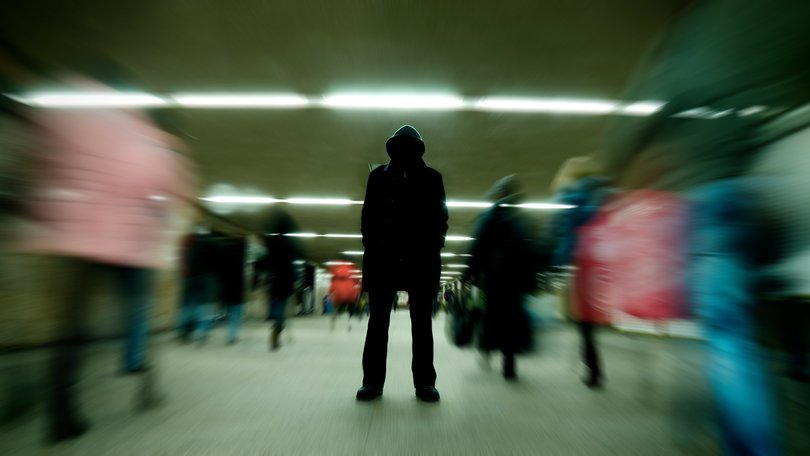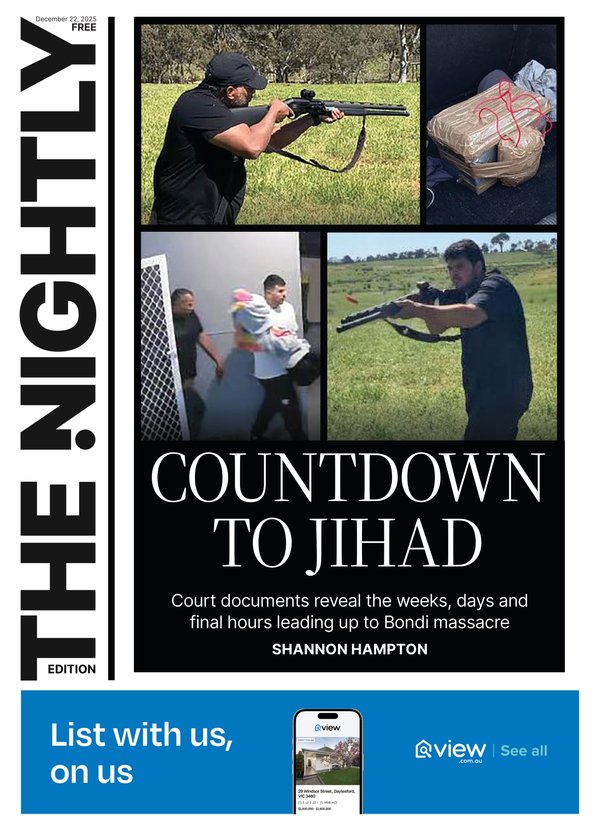THE NEW YORK TIMES: British neo-nazis discussed targeting migrants, mosques and synagogues

Brogan Stewart liked to refer to himself as the “Führer” in his group chat with fellow neo-nazis. At his home in Tingley, a village in northern England, a swastika flag hung on his bedroom wall.
On January 23 last year, Stewart, then 24, wrote in a private Telegram chat: “The time for talk is now over. We will be discussing and planning a mission against migrants.”
In a group call two weeks later, Stewart, who had gathered an arsenal of weapons, suggested targeting an Islamic education centre in Leeds, a city about 10 miles from his home, or “cruising that area looking for victims.”
Sign up to The Nightly's newsletters.
Get the first look at the digital newspaper, curated daily stories and breaking headlines delivered to your inbox.
By continuing you agree to our Terms and Privacy Policy.He had researched the centre, including its location and satellite imagery, and marked a route on a map for his co-conspirators.
Unknown to him, three of the seven people on that call on Feb. 5, 2024, were undercover operatives deployed by counterterrorism police and MI5, the British security service.
All these details were recounted at a two-month trial at Sheffield Crown Court, where last week Stewart and two co-conspirators, Christopher Ringrose, 35, and Marco Pitzettu, 26, were sentenced to between eight and 11 years in prison for “preparing acts of terrorism.”
All three men had denied the charge, and told the trial that they were not in reality planning violence, but instead engaging in edgy “banter” that aimed to shock.
But they had stockpiled more than 200 weapons, the police said, including swords, knives, crossbows, air guns, axes and bats. Ringrose had 3D-printed part of a homemade assault rifle.
The case has thrown a spotlight on the threat in Britain from extreme-right-wing terrorism, which has grown over the past decade and now represents around one-fifth of the counterterrorism police’s workload, officials say.
It also illustrates how domestic terrorism is increasingly fomented in encrypted messaging groups by small clusters of people, rather than by larger organized groups, experts said.
That trend was underlined by Ken McCallum, the head of MI5, in a speech last week in which he said his counterterrorism teams were running “near-record volumes of investigations.”
He added that plots “tend to be narrower in scope than once was the norm. My teams are mostly focused on individuals and small groups, rather than larger, more established networks.”
Extreme Islamists remain the largest terrorism threat in Britain, according to intelligence agencies and counterterror police. This month, a man who pledged allegiance to the Islamic State group attacked a synagogue in Manchester, leading to the killing of two people.
Several terrorist attacks have also been carried out recently by far-right extremists, including a neo-nazi convicted of stabbing an asylum-seeker in 2024 and a man who killed himself after firebombing a processing facility for asylum-seekers in 2022, an attack that counterterrorism police said was motivated by “extreme right-wing” ideology.
Hannah Rose, a senior researcher at the Institute for Strategic Dialogue, a think tank based in London, said there had been a “steady drumbeat” of violent plots in Britain that featured a “pipeline” from extremist far-right ideas shared online to real-world action.
“There is a transnational idea about white people, white culture, being attacked by a range of different ‘out’ groups — Jews, Muslims, migrants,” Rose said.
‘Orders Are Orders’
The three men sentenced last week initially met through a Facebook group for preppers, and later joined an explicitly neo-nazi group on Telegram, prosecutors said.
Members discussed their hatred for Muslims, Jews, nonwhites and immigrants and glorified violence against them, including the Hamas-led October 7, 2023, attacks in Israel. In messages sent a week later, Stewart wrote: “We gotta start attacking mosques.” “And synagogues,” came the swift reply from Ringrose.
Also in that Telegram group was an MI5 operative calling himself “Blackheart.” Stewart told Blackheart in messages that he wanted to create a “militarized unit” inspired by the SS, the nazi regime’s elite guard, that could tax nonwhite shops, “deal with” migrants arriving on small boats and prepare for a race war.
In transcripts of their messages prepared for the trial, the men expressed hatred for multiple groups, but they focused particularly on targeting immigrants, especially asylum-seekers arriving on boats across the English Channel, and Muslims.
Rose noted that the case had occurred during a period of “extraordinary mainstreaming” of anti-migrant and anti-Muslim hatred by some politicians and on social media.
But she also said that the terrorist cell followed a familiar pattern, with the men first connecting on a mainstream platform — in this case, Facebook — before entering “increasingly harmful and radical ecosystems.”
Such was Stewart’s trust in Blackheart that when he created a smaller “einsatzgruppe” — a reference to nazi death squads — in January last year, he made the undercover MI5 officer its second-in-command.
Describing it on Telegram as a “military style group,” Stewart posted a mission statement telling members they would have to “uphold the views and expectations of national socialism.”
A list of “basic duties” included to harass protests involving Muslims, the gay community and racial justice campaigners, to “disrupt migrant activities” and to “target mosques.”
‘Preparation for Action’
In the February 5 call, Stewart said: “The migrants think that they’re safe here, ’cause no one touches them, no one does anything. It is our responsibility to our people and to our country to make their stay here uncomfortable and frightening.”
In court, he told the trial that Blackheart had been the real leader of the paramilitary group, adding: “I was saying things I thought he wanted to hear.”
But jurors rejected that claim when they convicted the men in May. And in her remarks when sentencing the men, Justice Johannah Cutts said they were not “acting under the direction” of undercover agents.
She pointed out that before Stewart began conversing with Blackheart online, he had a nazi symbol tattooed on his hand and had posted in a Telegram chat: “We should take note of SS and Einsatzgruppe methods. They were effective and sent a message.”
She told the three that their actions had gone beyond the lawful holding of offensive beliefs into the “preparation for action involving serious violence.” She noted that Pitzettu had offered the use of his vehicle for the “mission” in Leeds and offered to host a “training day” on his land.
In an interview, Detective Chief Superintendent James Dunkerley, head of the counterterrorism unit that investigated the group, said that the police and MI5 decided to intervene once the men began discussing real-world targets and an “escalation” toward action took place.
“When they’ve got the weapons that they had,” Dunkerley said, “particularly the 3D-printed firearm, that is a real statement of intent and a risk that I’m not prepared to take for public safety.”
This article originally appeared in The New York Times.
© 2025 The New York Times Company
Originally published on The New York Times
